In the realm of international adventure travel, the adage “less is more” couldn’t be more accurate. Whether you’re planning to trek through the lush rainforests of Costa Rica, scale the rugged peaks of the Himalayas, or explore the vast Australian outback, how you pack can make or break your experience. The art of packing light doesn’t just save you from excessive baggage fees or the physical strain of lugging heavy suitcases across unfamiliar terrain—it fundamentally changes how you interact with your environment and the freedom you feel while exploring.
This comprehensive guide will walk you through everything you need to know about efficient packing for outdoor adventures abroad, helping you embrace the liberating philosophy that traveling light means traveling right.
Understanding the Philosophy of Packing Light

Packing light is more than just a practical consideration—it’s a mindset that transforms your entire travel experience. When you reduce your belongings to the essentials, you gain mobility, flexibility, and a sense of freedom that heavy packers rarely experience. You’ll find yourself more adaptable to unexpected situations, whether it’s quickly changing transportation plans or seizing a spontaneous opportunity for adventure. The psychological benefit is equally significant—with fewer possessions to worry about, you can focus more on immersing yourself in new experiences rather than managing your stuff.
This minimalist approach also aligns with responsible travel ethics, reducing your carbon footprint through decreased fuel consumption for transportation of your gear.
Researching Your Destination’s Climate and Conditions
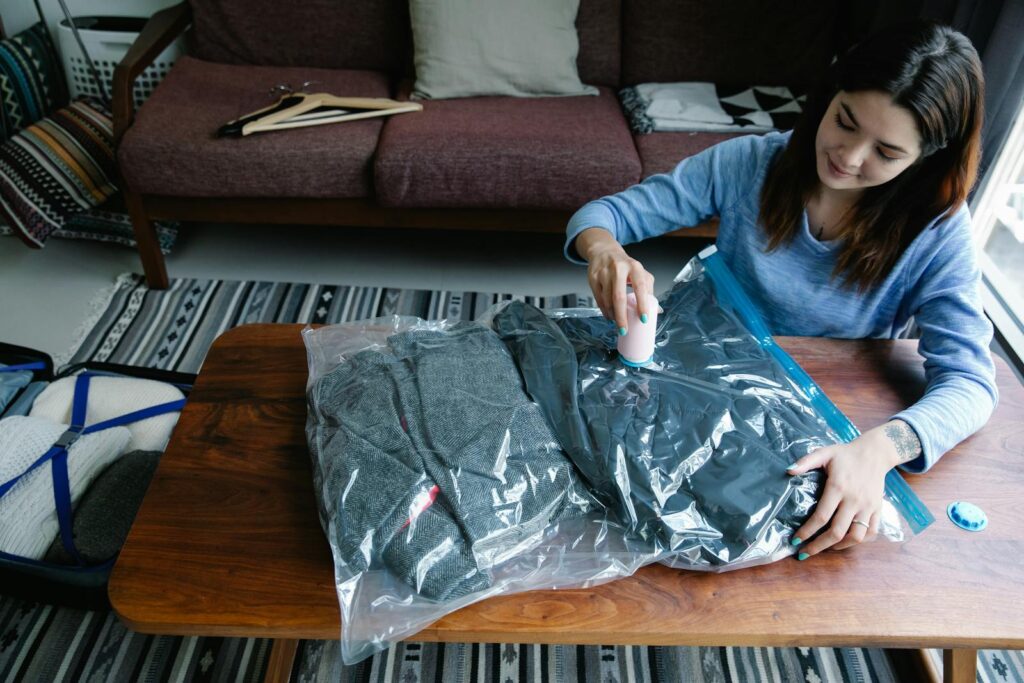
Thorough research about your destination’s specific conditions forms the foundation of smart packing decisions. Beyond basic seasonal weather patterns, investigate microclimate variations in different regions you’ll visit, as mountain areas may be significantly colder than coastal regions even within the same country. Consider speaking with travelers who have recently visited your destination through online forums or social media groups to get current, on-the-ground information about conditions. Research local cultural expectations regarding clothing, particularly for religious sites or rural communities where modesty standards may differ from your home country.
Additionally, look into whether your destination experiences dramatic temperature shifts between day and night, which would necessitate adaptable layering options rather than single-purpose garments.
Choosing the Right Backpack or Luggage
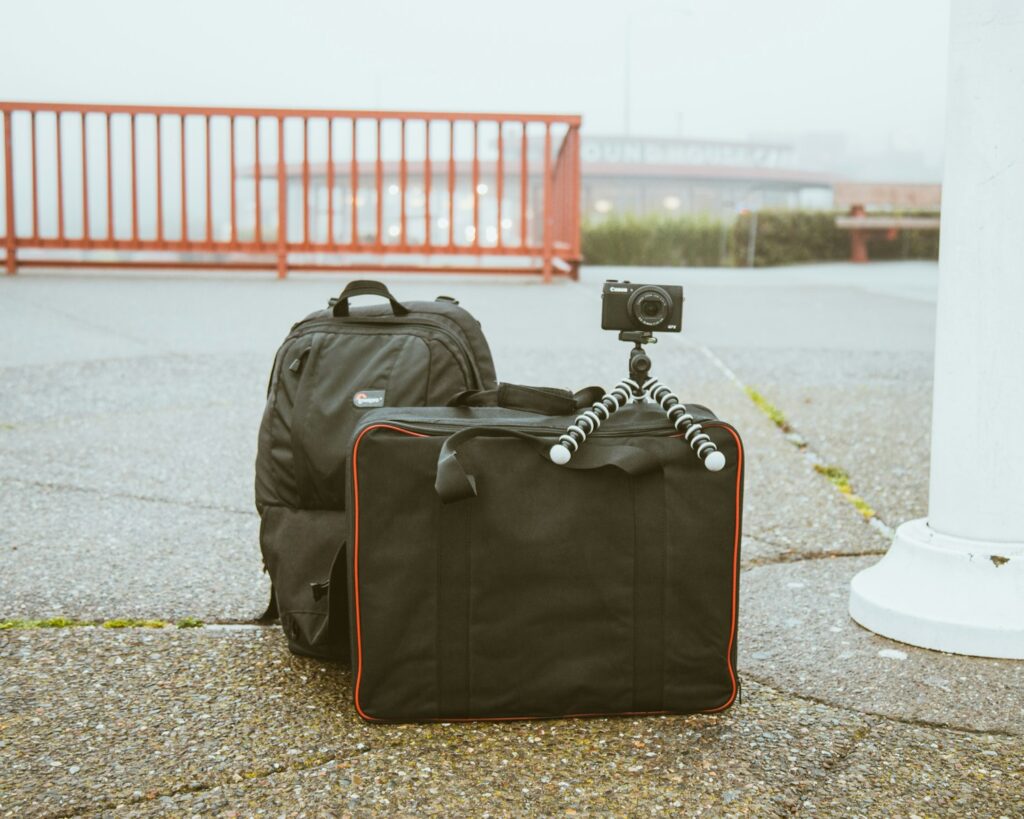
Your choice of luggage represents perhaps the most critical packing decision for outdoor adventures abroad. For maximum versatility, consider a travel backpack in the 35-50 liter range, which typically meets carry-on requirements while providing sufficient space for essential gear. Look for backpacks with multiple access points (top-loading and front-panel loading), which allow you to reach items without unpacking everything. Key features should include water-resistant materials, sturdy zippers preferably with lockable pulls, comfortable load-bearing hip belts, and compression straps to stabilize partially-filled packs. For extreme environments, consider backpacks with specific technical features such as ice-axe loops for alpine conditions or hydration reservoir compatibility for desert adventures.
The Core Clothing Strategy: Layering System

A properly executed layering system allows you to adapt to changing conditions with minimal clothing items. Start with a moisture-wicking base layer made of merino wool or synthetic materials that pulls sweat away from your skin and remains odor-resistant through multiple wears. Add an insulating mid-layer such as a lightweight fleece or down jacket that traps warm air next to your body, with the specific weight depending on your destination’s climate. Finish with a weather-resistant outer shell that protects against wind, rain, and snow—look for packable options with pit zips for ventilation during high-exertion activities.
This three-part system, when properly selected, can handle temperature ranges of 40°F or more with just three pieces, dramatically reducing the volume and weight of your packed clothing.
Smart Fabric Choices for Outdoor Adventures

The materials you choose can significantly impact both comfort and packing efficiency. Synthetic quick-dry fabrics like nylon and polyester blends offer durability and fast-drying properties, making them ideal for humid environments or frequent washing. Merino wool, though more expensive, provides exceptional temperature regulation, naturally resists odors for extended wear, and doesn’t feel itchy against skin like traditional wool. For extreme environments, consider specialized technical fabrics: UPF-rated materials for high-altitude sun exposure or insect-repellent-infused fabrics for tropical regions.
Avoid cotton entirely for active outdoor travel, as it absorbs moisture, dries slowly, and loses all insulating properties when wet—potentially creating dangerous conditions in remote environments.
Essential Gear vs. Luxury Items
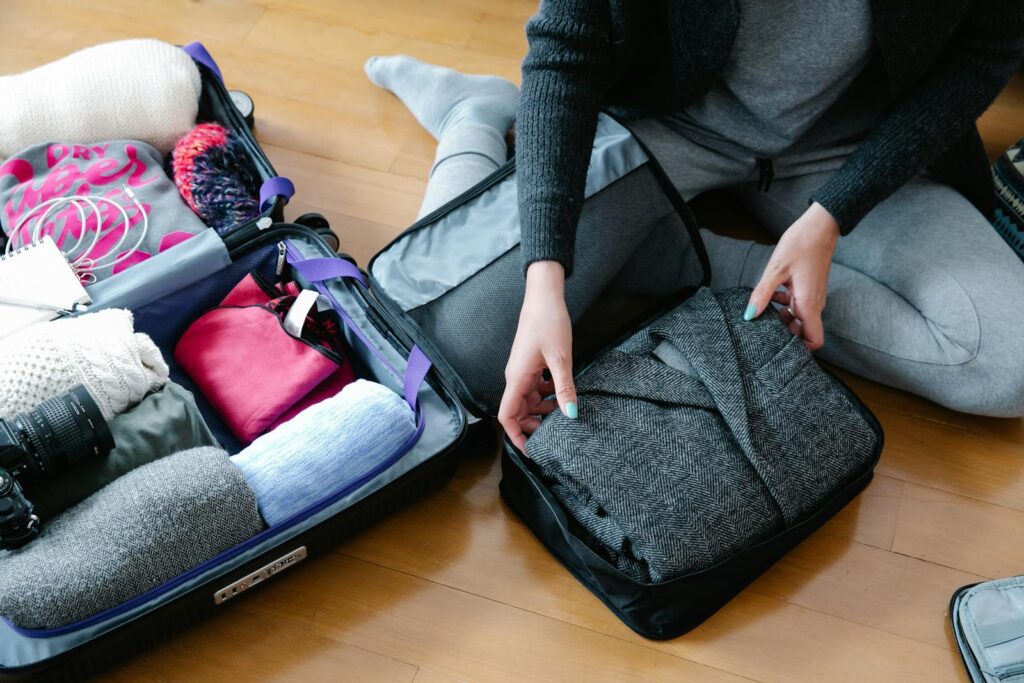
Distinguishing between true essentials and convenience items requires honest assessment of your planned activities and personal needs. Start by listing absolutely necessary items for safety and basic comfort: appropriate shelter, sleep system, water purification, navigation tools, first aid supplies, and adequate clothing for expected conditions. Next, evaluate each additional item by asking whether it serves multiple purposes, how frequently you’ll use it, and whether suitable alternatives exist at your destination. For electronic devices, consider consolidating functions—a smartphone can serve as camera, communication device, navigation tool, and entertainment system.
Remember that many items you might consider essential at home (like hair dryers or multiple footwear options) often become unnecessary luxuries when weighed against the freedom of traveling light.
Footwear Strategy for Different Terrains
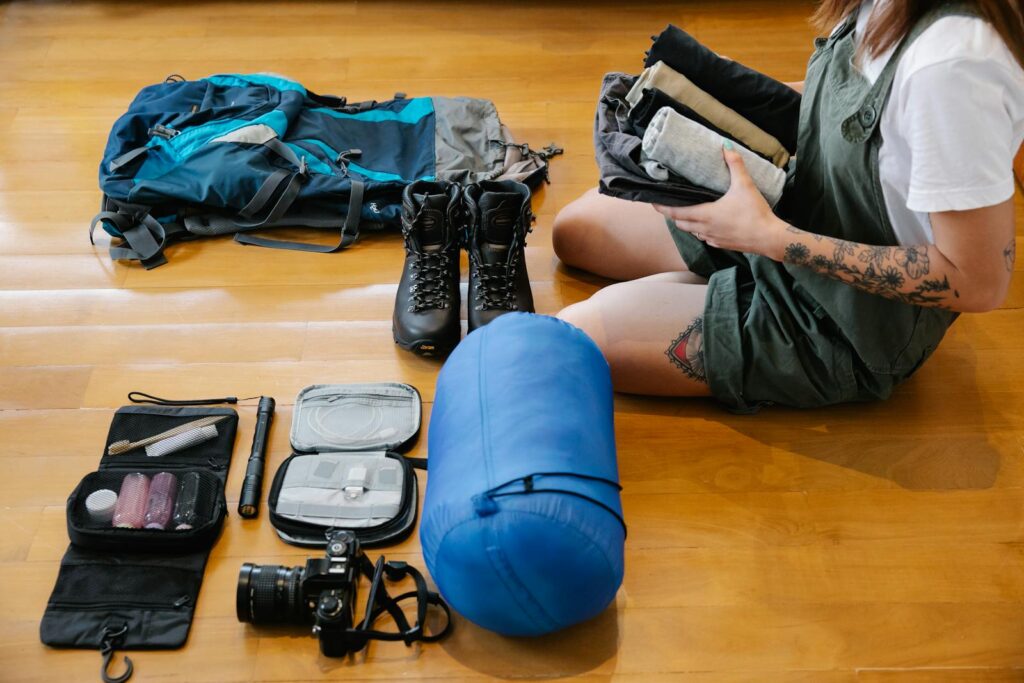
Footwear presents a unique packing challenge due to its bulk and weight, yet inadequate options can ruin an otherwise well-planned trip. For mixed-activity trips, prioritize versatile footwear that performs well across multiple terrains—mid-height trail shoes with good traction often provide the best balance of support, protection, and versatility without the weight and bulk of traditional hiking boots. Consider the specific environmental challenges you’ll face: waterproof membranes for consistently wet conditions, breathable mesh for hot climates, or enhanced insulation for cold environments.
Always break in new footwear thoroughly before departure, as blisters or foot pain can severely limit your mobility in remote areas. For longer trips or diverse activities, supplement your primary footwear with ultra-lightweight secondary options such as packable sandals for water crossings or camp shoes.
Minimalist Approach to Toiletries and Personal Care
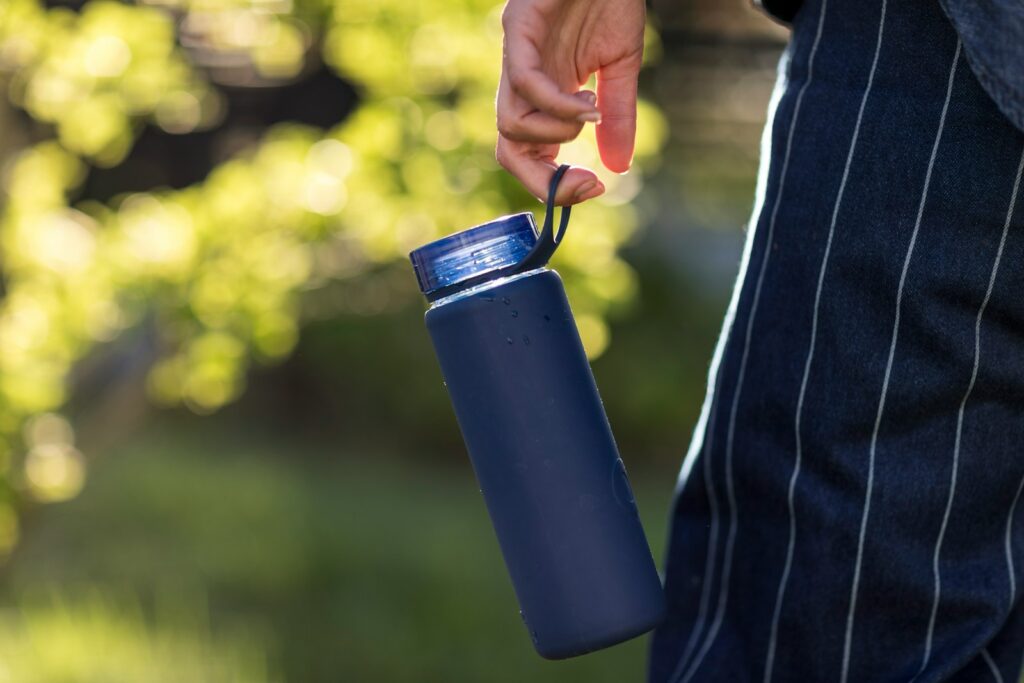
Toiletries often consume surprising amounts of pack space and weight if not carefully curated. Start by transferring liquids to ultralight silicone bottles in 1-2 ounce sizes, which provide enough product for several weeks while remaining compact. Seek solid alternatives to traditional liquids where possible—solid shampoo bars, tooth powder, and deodorant sticks eliminate leakage concerns while lasting significantly longer than their liquid counterparts. Multi-purpose products dramatically reduce your toiletry kit: castile soap can serve as body wash, shampoo, and laundry detergent, while pure coconut oil works as moisturizer, hair conditioner, and makeup remover.
For remote wilderness trips, consider biodegradable options that won’t harm sensitive ecosystems when you need to wash outside of established facilities.
Tech and Electronics: Finding the Balance
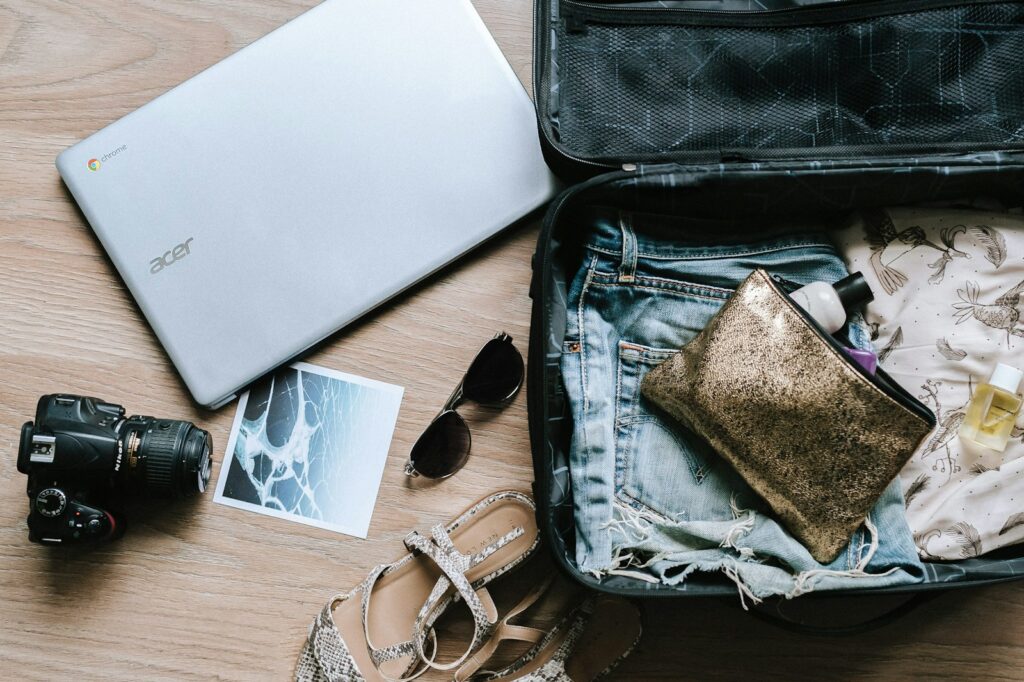
Modern travelers face the challenge of balancing connectivity needs with the weight and vulnerability of electronic devices. Start by assessing your true requirements: communication safety, navigation assistance, work obligations, or photography purposes. Consider devices that serve multiple functions, such as smartphones with high-quality cameras or tablets that can handle both entertainment and basic work tasks. Invest in a single, high-quality power bank with at least 10,000mAh capacity rather than multiple smaller ones, and choose charging cables with multiple adapter tips to service various devices. For extended trips to remote areas, investigate solar charging options, keeping in mind that the lightest panels may require multiple days to fully charge larger devices.
Always protect essential electronics with waterproof cases or dry bags, as replacing damaged devices can be extremely difficult in remote international locations.
First Aid and Emergency Preparedness
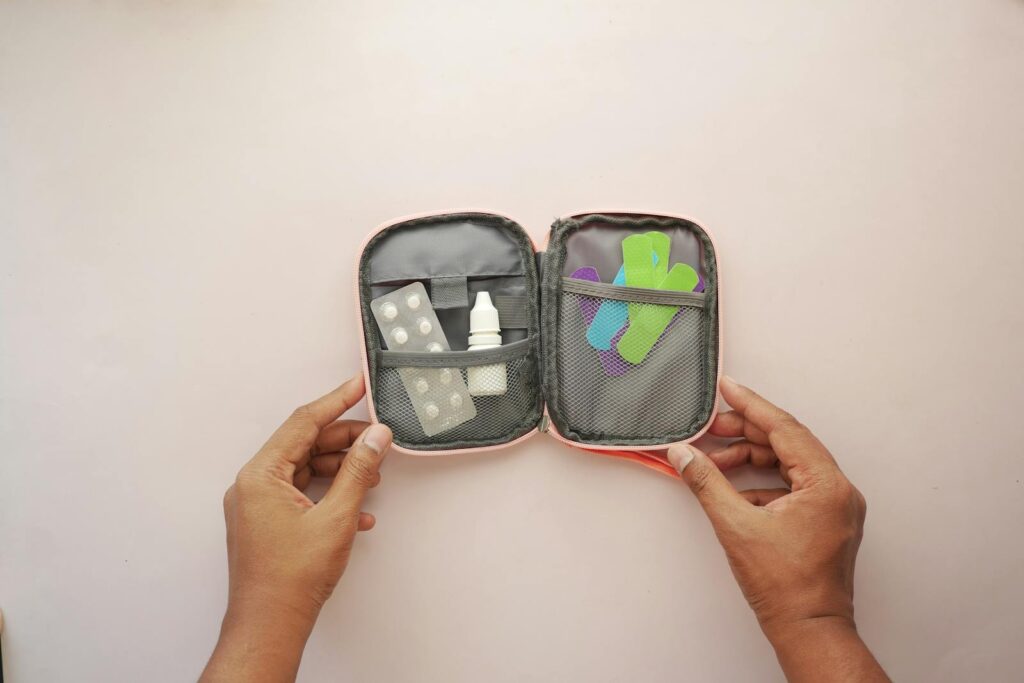
A well-thought-out first aid and emergency kit balances preparedness with weight considerations through careful risk assessment. Start with a basic pre-assembled ultralight first aid kit, then customize it based on your specific trip profile—adding blister treatment supplies for trekking trips or additional wound care for activities with higher injury risk. Include medications for common travel ailments (anti-diarrheal, pain relievers, antihistamines) plus any personal prescription medications, ideally carried in original labeled containers to avoid customs issues. Supplement medical supplies with emergency communication devices appropriate to your destination’s remoteness: satellite messengers for wilderness expeditions or simpler emergency whistles and signaling mirrors for less isolated locations.
Research the specific environmental or medical risks of your destination and prepare accordingly, whether that’s altitude sickness medication for high mountains or specialized insect protection for tropical regions.
Space-Saving Packing Techniques
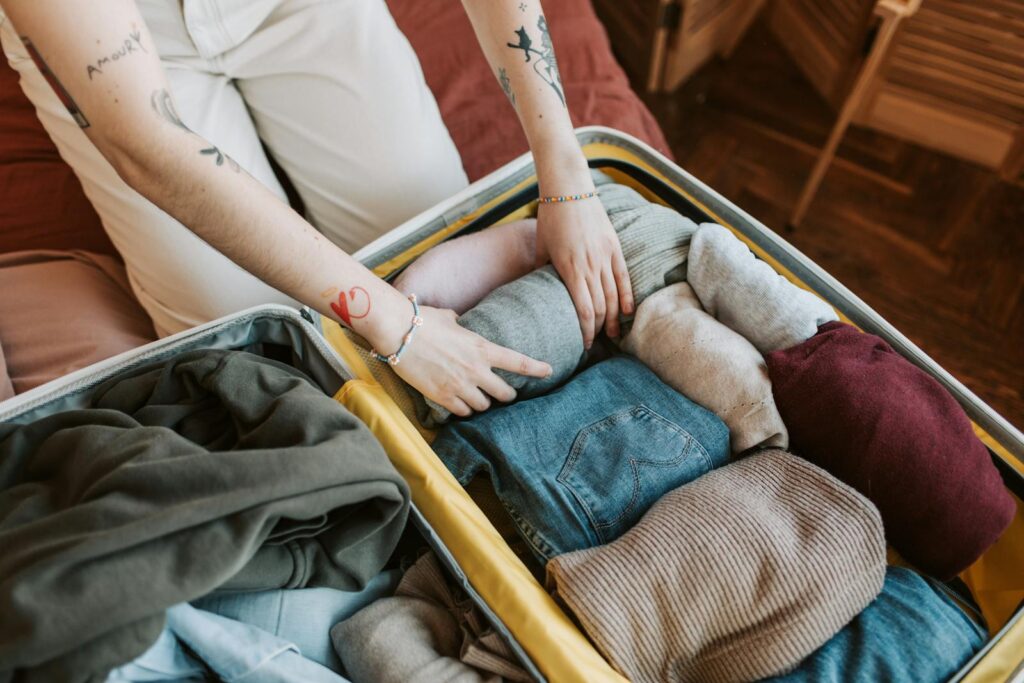
Mastering efficient packing techniques can reduce your pack volume by 30% or more, even with identical contents. Compression packing cubes organize your belongings while simultaneously reducing their volume—look for models with additional compression zippers for maximum space savings. For clothing, the rolling method generally works better than folding for preventing wrinkles while maximizing space efficiency, particularly for synthetic fabrics. Utilize every available space by stuffing socks inside shoes, filling pot interiors with small items, and using the “bundle wrapping” technique where delicate items are wrapped inside more durable clothing.
When using a backpack, pack heaviest items closest to your back and near the middle height for optimal weight distribution and balance, which reduces physical strain during extended carrying periods.
Adapting to Local Resources and Cultural Norms

Smart travelers recognize that not everything needs to be brought from home, particularly for trips lasting more than a couple of weeks. Research local availability of consumable supplies like sunscreen, insect repellent, and basic toiletries, which can often be purchased at your destination for similar prices while saving valuable packing space. Investigate laundry options along your route, as access to washing facilities (even if just a sink with travel soap) can dramatically reduce the clothing you need to bring.
Consider local cultural norms regarding dress and appearance, which might influence your packing choices—many religious sites require covered shoulders or heads, while some cultures have different expectations regarding formality even in outdoor settings. Being prepared to adapt to these local practices demonstrates respect while potentially easing interactions with local communities.
The Final Checklist: Pre-Departure Evaluation

Before finalizing your packing, conduct a systematic evaluation process to eliminate unnecessary items. Start by laying out everything you plan to bring, then ruthlessly challenge each item with questions about its necessity, frequency of use, and whether it serves multiple purposes. Perform a “practice pack” at least a week before departure to confirm everything fits comfortably in your chosen luggage with room to spare—overstuffed bags are more likely to fail at critical moments. Weigh your fully packed bag to ensure it meets airline carry-on restrictions and, more importantly, that you can comfortably carry it for extended periods through varied terrain.
Finally, consider the “half rule”—many experienced travelers suggest packing half the clothing you initially think you need and twice the money, reflecting the reality that most first-time packers significantly overestimate their gear requirements.
Conclusion

The journey toward packing mastery is ongoing, with each trip providing new insights into what truly enhances your travel experience versus what merely weighs you down. By embracing the principles outlined in this guide—from thoughtful gear selection to space-saving techniques—you’ll discover that traveling light isn’t about deprivation but liberation. When your physical burden decreases, your capacity for immersive experiences increases proportionally. You’ll move through the world with greater ease, adapt more readily to unexpected opportunities, and connect more authentically with both natural environments and local cultures.
Remember that the most meaningful travel souvenirs aren’t the physical items you carry home, but the experiences and perspectives you gain along the way—and those are always weightless.

